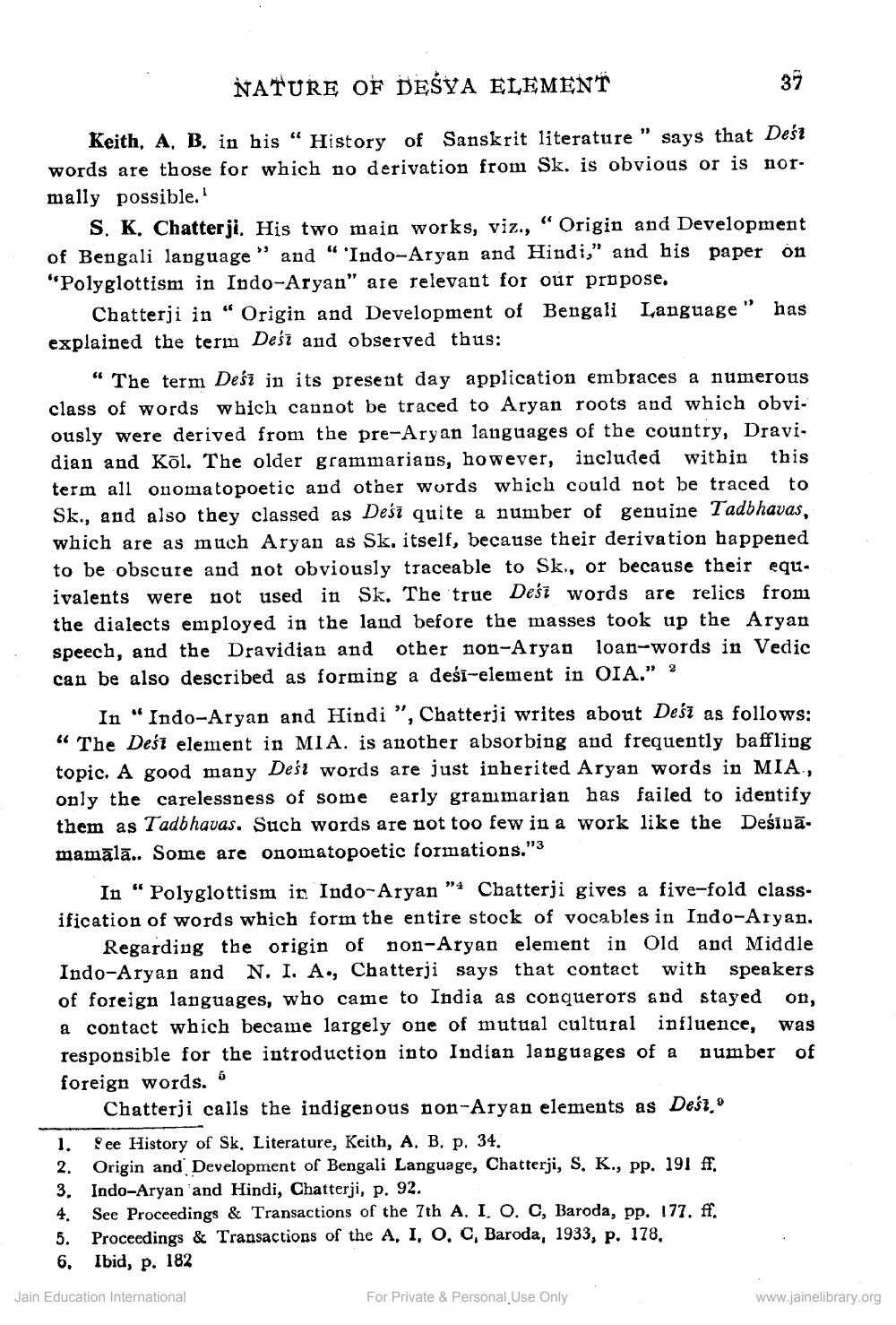________________
NATURE OF DESYA ELEMENT
32
Keith, A, B. in his “ History of Sanskrit literature ” says that Desi words are those for which no derivation from Sk. is obvious or is normally possible.'
S. K. Chatterji. His two main works, viz., "Origin and Development of Bengali language ” and “ 'Indo-Aryan and Hindi," and his paper on "Polyglottism in Indo-Aryan" are relevant for our propose.
Chatterji in " Origin and Development of Bengali Language" has explained the term Deść and observed thus:
“ The term Deśī in its present day application embraces a numerous class of words which cannot be traced to Aryan roots and which obviously were derived from the pre-Aryan languages of the country, Dravi. dian and Kõl. The older grammarians, however, included within this term all onomatopoetic and other words which could not be traced to Sk., and also they classed as Deśī quite a number of genuine Tadbhavas, which are as much Aryan as Sk, itself, because their derivation happened to be obscure and not obviously traceable to Sk., or because their equ. ivalents were not used in Sk. The true Deść words are relics from the dialects employed in the land before the masses took up the Aryan speech, and the Dravidian and other non-Aryan loan-words in Vedic can be also described as forming a desi-element in OIA.” ?
In "Indo-Aryan and Hindi ”, Chatterji writes about Deśī as follows: “ The Deść element in MIA. is another absorbing and frequently baffling topic. A good many Deść words are just inherited Aryan words in MIA, only the carelessness of some early granımarian has failed to identify them as Tadbhavas. Such words are not too few in a work like the Deśīvā. mamālā.. Some are onomatopoetic formations.”3
^ Olddon. ass.
In "Polyglottism in Indo-Aryan "4 Chatterji gives a five-fold class. ification of words which form the entire stock of vocables in Indo-Aryan,
Regarding the origin of non-Aryan element in Old and Middle Indo-Aryan and N. I. A., Chatterji says that contact with speakers of foreign languages, who came to India as conquerors and stayed on,
contact which became largely one of mutual cultural influence, was responsible for the introduction into Indian languages of a number of foreign words.
Chatterji calls the indigenous non-Aryan elements as Deśz." 1. See History of Sk. Literature, Keith, A. B. p. 34. 2. Origin and Development of Bengali Language, Chatterji, S. K., pp. 191 ff. 3. Indo-Aryan and Hindi, Chatterji, p. 92. 4. See Proceedings & Transactions of the 7th A. I. O. C, Baroda, pp. 177. ff. 5. Proceedings & Transactions of the A, I, O, C, Baroda, 1933, p. 178, 6. Ibid, p. 182
Jain Education International
For Private & Personal Use Only
www.jainelibrary.org




